2016 GEC Catalyst Awards
2016 GEC Catalyst Awards
The 2016 Global Electronics Council (GEC) Catalyst Award winners were recognized at the Electronics Goes Green Conference in Berlin, Germany, for their accomplishments in “innovations in resource reduction.” AMD won the 2016 Catalyst Award for “Catalyzing Impact at Scale.” PuzzlePhone won the 2016 Catalyst Award for “Catalyzing Disruptive Innovation.” Additional information about AMD’s and PuzzlePhone’s winning nominations, as well as those from the other Finalists, is available below. In 2015, Dell, Inc. won the inaugural Catalyst Award for its innovative use of closed-loop plastics.
2016 Catalyst Award Winners
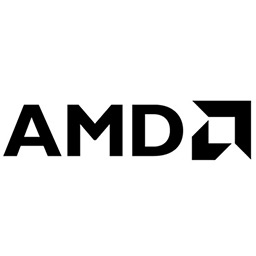
AMD 6th Generation A-Series Accelerated Processing Unit (APU)
Advanced Micro Devices (AMD) designs component processors for high-performance computing, immersive technology and datacenters. It and other semiconductor companies have long benefited from Moore’s Law, the doubling of the number of transistors on a chip about every two years as manufacturing technology advances allow for smaller and smaller transistors, and smaller computer chips. Historically, each smaller generation of these chips would consume fewer resources while providing ever greater performance. However, the near clockwork improvements derived from Moore’s Law have slowed substantially in recent years. This stems from the fact that the miniaturization of transistors is now bumping against physical limits, affecting the design parameters of processors. As transistors get smaller, leaking power current becomes a greater engineering challenge because transistor threshold voltages have been reduced to the point where the devices don’t completely shut off. This breakdown in Dennard scaling has resulted in higher power consumption for the highly integrated, high-performance devices that consumers need in medical, research, financial and other critical industries. Even so, AMD is on track to achieve a stretch goal to dramatically improve the energy efficiency of its microprocessors by 25 times from a 2014 baseline—a fundamental part of the company’s business strategy called the 25×20 Initiative. In 2015, AMD released the 6th Generation A-Series Accelerated Processing Unit (APU), codenamed “Carrizo”. Carrizo consumes substantially fewer natural resources both in production and in use compared to its predecessor, resulting in a much smaller impact on the environment. This achievement is a result of intense engineering work that led to innovations including a new memory architecture, power efficient silicon to optimize voltage and reduce power consumption, high density libraries to reduce travel paths and reduce electrical leakage from the circuits, and intelligent power management that dynamically adjusts power in response to the tasks being run. When taken together, Carrizo achieved a 2.4 times increase in energy efficiency compared to the previous product. And significantly, upgrading to Carrizo from the previous product results in a 46 percent reduction in life-cycle greenhouse gas emissions, based on a three-year service life. AMD has seen increasing momentum for the Carrizo 6th gen APU, especially for laptop computers. This is evident based on new design wins with technology manufacturers (OEMs), new large-scale commercial deployments, and the growing adoption of AMD technology that improves the visual experience during video playback and gaming. The new Carrizo processor offers all-day battery life, and excellent performance. As always, there is extreme competitive pressure in the computer market for new processors that provide even greater performance while minimizing power consumption. This is made more challenging due to the slowdown in Moore’s Law. Gains that once were largely a byproduct of manufacturing gains now must be augmented with advanced engineering and a total company commitment. Further gains will come from improvements in semiconductor architecture and innovative power management, as well as manufacturing process optimization. These gains will be embodied through new processor generations that will be released by AMD over the next several years, and with even greater energy efficiency improvements. With product releases on the company’s roadmap, AMD is on track for achieving the goal to improve APU energy efficiency 25 times between 2014 and 2020, that will lead to new and immersive digital experiences while at the same time limiting energy use and environmental impact.

International Telecommunication Union
PuzzlePhone, The Upgradeable Modular Smartphone by Circular Devices Oy
2016 Catalyst Award Finalists
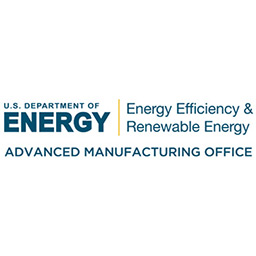
Superior Energy Performance (SEP) Certification for Increased Energy Productivity under ISO 50001
Superior Energy Performance® (SEP™)对那些实施符合ISO 50001全球能源管理体系标准的能源管理系统并实现经核实的能源绩效改善的工业设施和商业建筑进行认证。能源管理系统(EnMS)帮助设施建立政策和程序,系统地跟踪、分析和提高能源效率。由40多个国家参与制定的《ISO 50001能源管理体系--使用指南的要求》(或简称《ISO 50001》)是全球公认的能源管理体系的最佳实践。SEP是在整个电子产品供应链中提高能源效率和减少温室气体(GHG)的重要工具。可持续发展的努力通常集中在产品的最终用途或其可回收性上,尽管生产过程可能占到产品温室气体排放的绝大部分。例如,苹果iPhone 6s的生产占该产品温室气体排放的84%,而客户使用占10%。这个例子是众多例子中的一个,表明产品整个生命周期中的所有阶段--从原材料的开采、不同供应商的部件生产、产品的制造、分销、零售和客户的最终使用--也会造成其总的能源和碳足迹。供应链是复杂和多面的,但供应商和制造商的生产过程为减少产品的能源和碳足迹提供了巨大的机会。电子产品OEM可以与他们的供应商合作,使用SEP来帮助揭示隐藏的节能机会,并着手在供应链的生产过程中不断提高能源性能。系统化的能源管理是在任何产品的供应链上减少能源消耗和温室气体(GHG)的一种行之有效的策略。SEP认证框架使用ISO 50001国际标准,帮助供应链上的公司实施EnMS,以持久、可持续的方式改善能源绩效。近50家工厂正在参与,44家工厂已经获得了SEP项目的认证(38家在美国,4家在墨西哥,2家在加拿大)。这些设施发现了SEP项目所提供的强大的、以数据为驱动的能源性能改进结果的价值。实践证明,SEP能够显著提高和维持能源性能和能源成本的节约,从而获得极具吸引力的投资回报。虽然实施EnMS可能被公司视为一项巨大的投资,但经过认证的设施在能源和成本节约方面已经看到了积极的回报,而且持续的分析表明,实施SEP的成本继续下降。例如,对通过SEP认证的设施的分析表明,在开始实施SEP的15个月内,能源成本平均减少12%,使用无成本或低成本的操作措施,每年可节省36,000至938,000美元。SEP对能源节约的第三方验证通过一个透明的过程提供了可衡量的、可靠的节约。该计划最初示范的成功使人们对SEP的兴趣越来越大,该计划正在继续扩大。SEP有多个短期和长期的里程碑,以增加认证的数量和项目的影响。明年将有几个认证正在进行中。能源部还与七个领先的水和废水处理机构合作,在一个试点项目中展示实施SEP计划的能源和效率效益,目标是在2017年对每个组织的至少一个设施进行认证。能源部还在与电子标准开发商合作,考虑通过OEM与一个或多个供应商的合作来纳入SEP。DOE在产品可持续性标准方面的工作包括针对数据中心服务器的NSF 426标准(目前处于工作草案阶段),DOE还在与其他标准的开发者合作,例如,UL 110-移动电话和IEEE 1680.1-台式电脑。
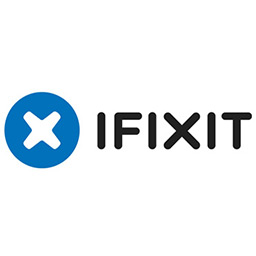
Empowering Repair, Enabling Reuse, Conserving Resources
iFixit is the largest free repair manual in the world. It’s nearly 20,000 guides have taught millions of people how to fix complicated electronic devices that might have otherwise gone into the landfill. The organization concentrates on electronics because e-waste is one of the fastest growing waste streams on earth. Teaching consumers how to repair their own electronics gives them an alternative to the dump. Moreover, repair is a more effective end-of-life strategy than recycling. Keeping a device out of the shredder and in use conserves the energy and materials that went into manufacturing the device. Electronics are some of the most resource intensive products humans know how to make. Despite the heavy environmental impact, we are consuming more electronics faster than ever before. The best shot we have at reducing the environmental impact of our electronics is to keep them around for as long as possible. iFixit is a complete repair resource to help owners extend the life of their electronics, ultimately conserving raw materials and reducing the demand for more electronics. iFixit has made the Inc. 5,000 list of fastest growing companies several times. The company designs specialty electronics repair tools and kits based off of data gathered from creating thousands of repair manuals. The company also sources and sells replacement parts. iFixit has pioneered several key partnerships with recyclers and universities, in order to keep expanding iFixit as a free repair resource. The result is that iFixit has been able to maximize its impact, while still keeping its team comparatively small. Despite the project’s success, iFixit has encountered several challenges to teaching DIY repair. Manufacturers haven’t been incentivized to integrate repairable, upgradeable design into their device development strategies. But as major manufacturers transition towards less upgradeable, more integrated designs—solidifying the link between repairable technology and sustainable technology has never been more important. It has taken iFixit more than a decade of advocacy, but repair is beginning to make inroads back into the global consciousness. And iFixit is actively participating in discussions involving the Circular Economy and encouraging manufacturers to incorporate repairable designs into their products. In the coming years, iFixit expects to continue to expand the number of free repair guides it offers to the public and will work to strengthen the ecosystem for repair. The project’s short term goals include more advocacy-related initiatives—including legislation—to promote repairability in devices. Its long term goals include building a more robust free resource for repair.
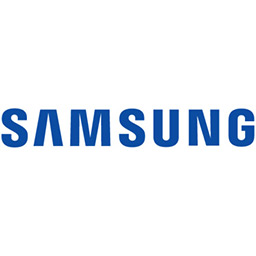
Samsung Screwless 2016 Curved Full HD TV
The UN55K6250 Curved Full HD TV is a milestone product for Samsung because it is engineered as environmentally the best in class. From the material sourcing, production and to the end of a product’s life cycle, Samsung’s focus on being green is unmistakable. With the new UN55K6250 Curved Full HD TV, Samsung continues to demonstrate an innovative balance of superior technology with sound sustainability practices. Industry’s first, Samsung uses ‘polyketone’, a new environmentally-preferred material made from carbon monoxide. At 1.5kg, polyketone greatly reduces greenhouse gas emissions compared to PC (Polycarbonate) (6kg) and ABS (3.1kg). About 31g of polyketone will make up the speaker in the nomination model series. In addition, this nomination uses another major milestone of source reduction for Samsung’s television design: screwless rear cover. On Samsung’s 55 inch television, there are 31 screws just on the rear cover alone. With Samsung’s innovative greener design, we removed these screws from the rear cover and instead use a snap closure method. This screwless design was no question for market viability since it reduces sources, cost, production and labor time, disassembly labor time during recycling, and even lowers the energy consumption at the manufacturing facility by eliminating the use of electric screwdriver. We ambitiously plan to apply this screwless rear cover on all but one series of televisions that will be launched in 2016, that’s 37 individual models! And the first of the screwless design rear covered television has already been made commercially available in March. Multiplying to the total number of volume forecasted at millions, the reduction in the environmental footprint is only at large. This year, Samsung will explore polyketone in the speakers of UN55K6250 and its series for the feasibility of potentially expanding to more models and other application in 2017. One of the new challenges will be to work closely with the polyketone supplier to source carbon monoxide from already emitted source such as industrial byproducts instead of creating new carbon monoxide while maintaining the quality of polyketone in order that Samsung does not compromise the quality of our products, a commitment we promise to our customers. We are thrilled by this opportunity to share our successful innovative-sustainability story because a continuous market challenge is to raise awareness to consumers in order to aid their purchasing decision to the environmentally-preferred products. Nonetheless, Samsung is enthusiastic about further reducing GHG emission thru every unit of UN55K6250 produced thru its screwless rear cover and the use of polyketone plastic. Previously Samsung has already reduced in sources by applying recycled plastic, by using soy ink that is high-density than regular ink, and in paper packaging from slimmer and lighter product designs. By far Samsung Screwless Curved Full HD Model UN55K6250 represents the next evolution in sustainable product development.
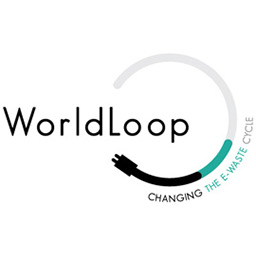
Resource Recovery Sub-Saharan Africa Connecting to Global Markets
WorldLoop works to promote responsible use, reuse and recycling of IT devices. This not only extends the original life of a product whose most intensive resource consumption is accounted for in the production phase of its life but also ensures that at the end of its intended life, the resources used can go back into new material production, avoiding landfills or incineration. WorldLoop partners with social entrepreneurs who work as e-waste collectors and recyclers in Africa by offering financial support, technical and managerial capacity building, and facilitating the reverse logistics of complex and hazardous fractions under the ‘Best of Two Worlds’ approach1 (Bo2W). First, seed funding is provided after the presentation of a strong business plan. Then WorldLoop provides technical training on how to test and repair products for reuse and to determine their reuse potential of ICT products and safe store and dismantle techniques for resource recovery. The social entrepreneurs also receive ongoing business management training to drive marketing, HR and accounting needs including cashflow management. Finally, WorldLoop facilitates the legal transboundary movement logistics related to shipping complex and hazardous waste ensuring that all relevant stakeholders and competent authorities are involved. WorldLoop has operationalised the Bo2W model combining local collection and dismantling efforts in developing countries with best-available-technologies for advanced recycling solutions available in industrialised countries. By providing an alternative to primitive recycling practices, and a solution for the non-valuable toxic material, WorldLoop creates a win-win-win for the economy, environment and society. WorldLoop is therefore an innovative social enterprise that truly helps in decreasing environmental and health threats by sharing savoir-faire and offering training that will have immediate positive impacts.
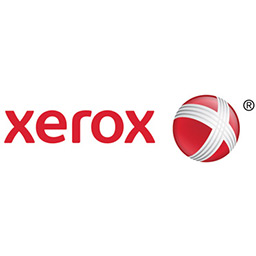
Resource Reduction of Toner Supplies through Life Cycle Innovation
在施乐公司,可持续发展是我们做生意的方式,而不是做生意的成本。实现我们的目标并向我们的客户提供高质量的可持续产品意味着超越现状并努力创新。施乐公司的2016年催化剂奖提名强调了施乐公司通过三项重要举措实现的可持续效益。这些举措通过生命周期创新减少了与硒鼓和容器相关的资源,而如今许多解决方案仅仅依靠重复使用或回收来减少资源使用。首先,在许多Xerox®墨粉盒上实施的设计改变,使制造容器所需的原材料资源平均减少26%。其次,在选定的Xerox®墨粉盒上实施了塑料树脂材料的改变,减少了制造墨粉盒所需的能源量。新的塑料树脂每生产1,000公斤材料所需的能源减少了8.8千兆焦耳,因此产生的温室气体排放更少。除了这些环境效益外,这种树脂的改变还带来了供应保证和成本效益。最后,创新的再利用、再循环和再制造过程已被实施,以管理施乐 ® 墨粉盒和容器的寿命终结。施乐公司制定了一项生态箱计划,以便在平衡成本的同时,促进负责任地处理碳粉耗材的报废问题。通过这样做,可以减少原始材料的负担,减少与制造新产品相关的成本,并减少运输距离。所有通过质量和压力测试的返回用品都将被重新使用或重新制造。任何未能通过测试的用品都要经过一个专利的材料分离过程,以回收旧材料重新用于新产品,实现零废物填埋。在过去的四年里,通过实施这三项创新,施乐®墨粉耗材的原材料总共减少了近9亿公斤,避免了超过400万公斤的二氧化碳当量的温室气体排放。减少资源的积极效果可以在全世界范围内实现,因为全世界共享原材料储备这一单一的有限资源和温室气体排放的负担。这些举措在社会上也是可持续的,因为这些活动包括减少资源而不是依赖消费后的材料,减少对紧张资源的负担,以及与一个向贫困家庭提供物资的报废处理供应商建立伙伴关系。与每一项新技术、创新或工艺一样,在带来好处的同时也有挑战和潜在的权衡。在进行创新以减少环境影响时,最终的挑战是克服与创新相关的货币成本。然而,施乐公司已经确保他们的资源减少举措不会给客户带来额外的成本,因此,所有相关的可持续发展效益都能实现。总的来说,施乐公司的2016年催化剂奖提名强调了与施乐®墨粉耗材的生命周期资源减少创新相关的环境、经济和社会效益。

